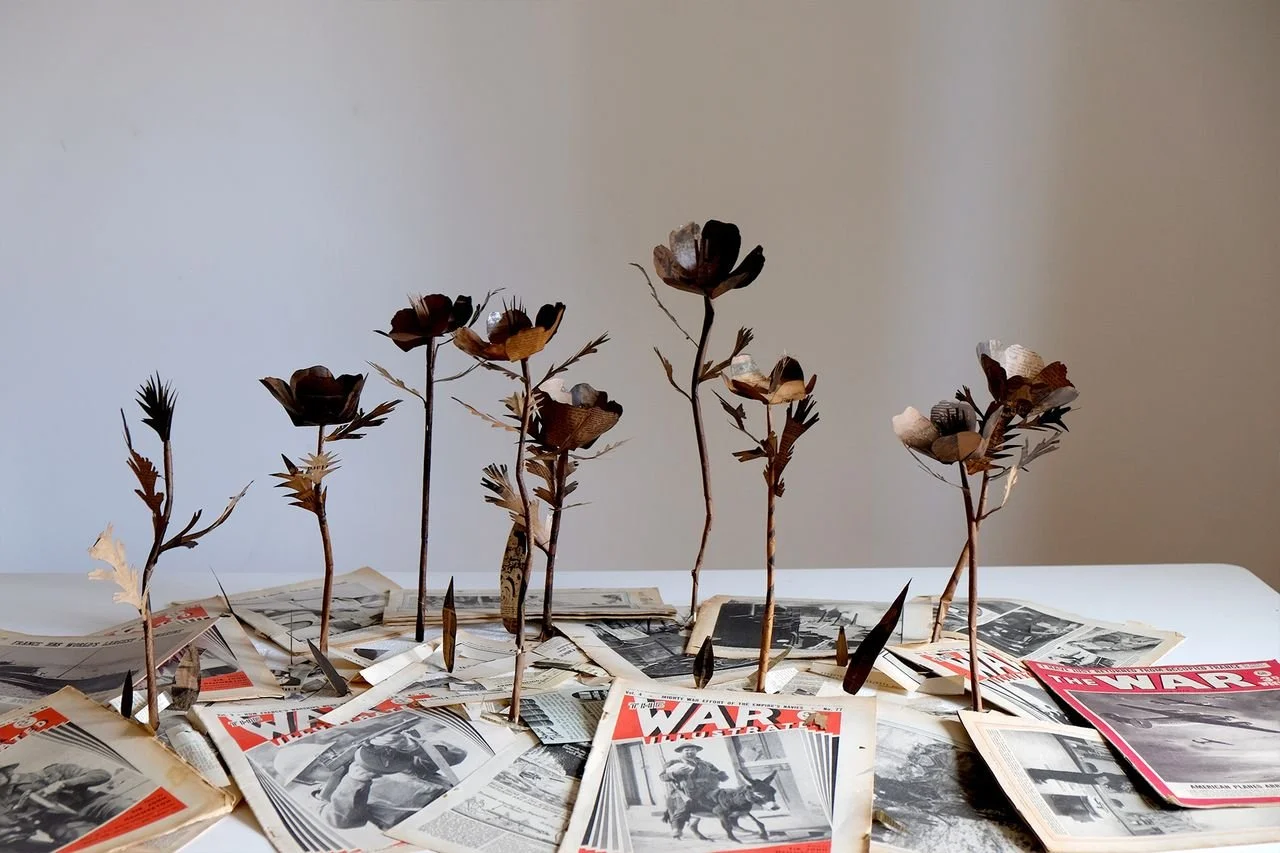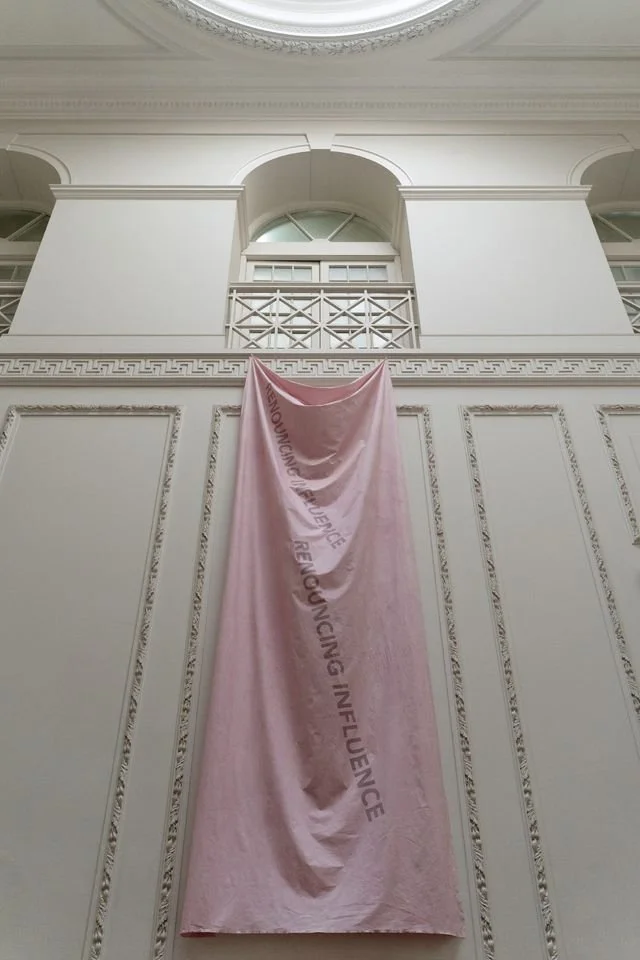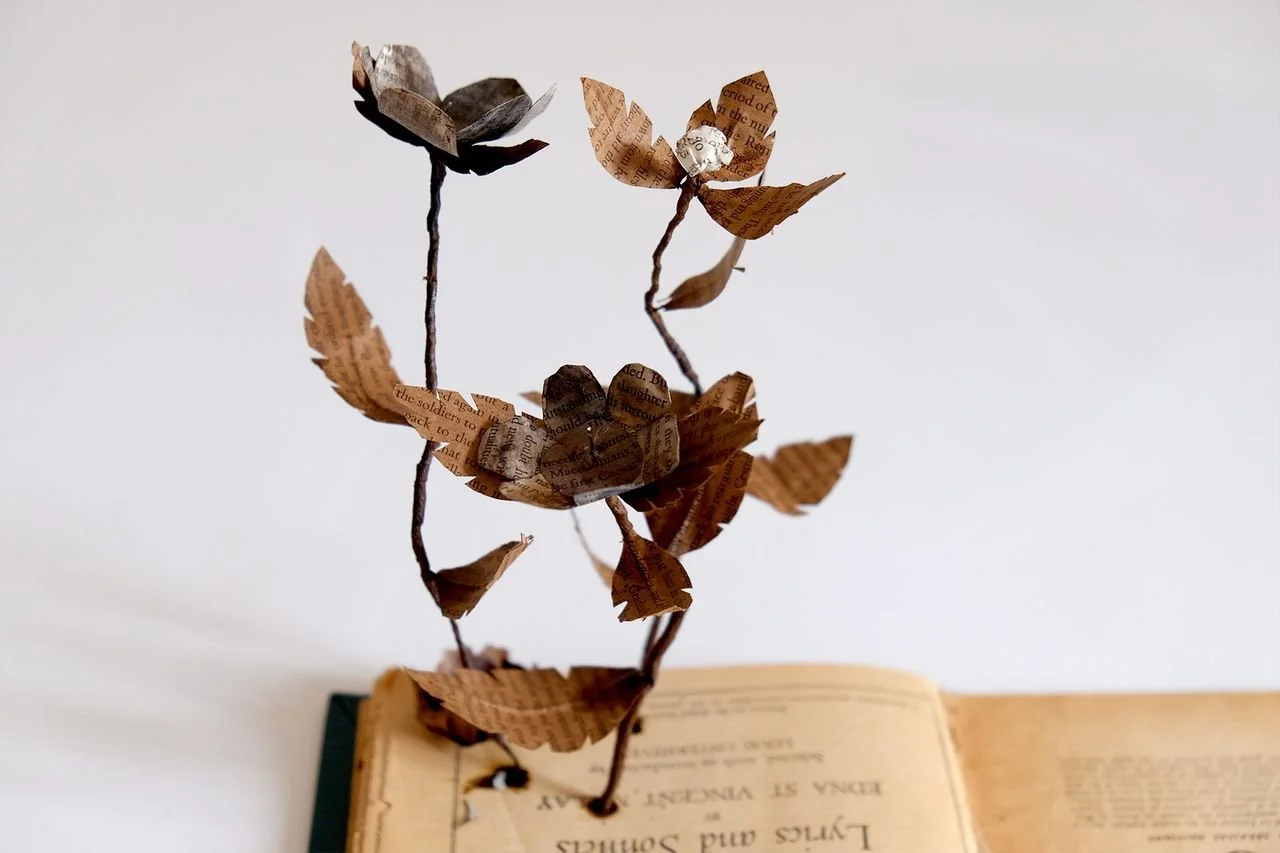Reading Between the Lines: Kent House Knightsbridge’s Exhibitions
Niv Fridman’s art piece Flower Field. Image credit: Niv Fridman
Dialogue and dreams collide at Orit Schreiber’s gallery in Kent House Knightsbridge … but to get the most out of it, you might have to read between the lines.
Hadar Tsarfaty with her installation Renouncing Influence. Image credit: Shachaf Pereg
Despite the variety of works within this group exhibition, a few are connected by how numerous artists employ the written word. Schreiber, the curator, explains that the current exhibit, Dream Space (18th September - 15th October 2025) is a manifestation of the fragility of nature and humanity, which come together to ‘make dreams tangible.’
‘I think of a voice; once you speak, it’s out there in the universe,’ she says. ‘And then where does it go? Where does sound go? Where does anything go?’
Schreiber works closely with the artists, visiting them multiple times in their studio to see their imagination working in a non-show environment.
‘I think of a voice; once you speak, it’s out there in the universe.’
‘I learn a lot from listening to the artists talk about their work,’ she explains. ‘In their workspace … they open up and talk, and it’s really like entering someone’s mind. It’s so fascinating to me.’
One particular standout is artist Hadar Tsarfaty, a graduate from the Royal College of Art whose installations were shown in Schreiber’s exhibit, Hope is but a Waking Dream, (8th April - 8th May 2025).
Tsarfaty’s works don’t just lie flat on a canvas; instead, her hanging fabric installations emblazoned with inks and text engage with three-dimensional space. She’s known for meticulously planning every detail in her art, from the luxurious draping of the fabric to the fonts themselves.
Hadar Tsarfaty’s Sharing Intentions. Image credit: Shachaf Pereg
‘Typefaces. They appear in a lot of spaces,’ she says. ‘If it's handwritten, it means one thing – if it's a strict traffic sign, it means another.’ In an era supersaturated with digital and physical texts, this hand-crafted attention to semiotics and expression distinguishes the messages of her work.
She gives particular consideration to the vibrant shades of the textiles. At her last exhibition, she hand-dyed the fabrics she used, explaining that this arduous work has a grand history. ‘Textiles were a way for women to have financial autonomy in times when they didn't have any property or money,’ Tsarfaty notes. Ever since Homer’s Odyssey depicted Penelope outwitting men by weaving and unweaving a shroud, textile work has evoked female autonomy, a legacy which Tsarfaty centres in her work.
‘With the text and the draping … it's like the body carrying language. Language is always connected to something.’
This is perhaps most apparent in a piece Tsarfaty displayed earlier this year, entitled Renouncing Influence. It consists of pink cotton screen-printed with the titular words, a long waterfall of fabric cascading down the walls of Kent House Knightsbridge. In such a grand old building, you’d expect to see flowing draperies and gold-embellished curtains, but the minimalism of Tsarfaty’s piece, from its bold pink palette to the sans-serif block letters stamped across it diagonally, offer an almost punk-rock iconoclasm that contrasts with these genteel surroundings.
Hadar Tsarfaty’s Renouncing Influence. Image credit: Shachaf Pereg
Perhaps this is the influence that Tsarfaty renounces, its confrontationally bright colour and cryptic maxim asking the viewer how they might question the weight of history, and where the legacy of textile art might lead women next.
These handcrafted elements yield majestic works that enshroud entire walls— and which, equally, can be folded down to fit in a tote bag. Although Tsarfaty has shown her art in Tel Aviv, Amsterdam, and as part of Tate Lates at Tate Modern, Schreiber’s group exhibition gave her an unusually direct opportunity to connect with her audience.
‘With the text and the draping … it's like the body carrying language,’ Tsarfaty explains. ‘Language is always connected to something.’
‘My structures would be fragile, yet strong, because they need to last.’
Another memorable artist currently on show in Schreiber’s gallery is Niv Fridman, a London-based creator who also studied at the Royal College of Art. His assemblage, entitled Lyrics and Sonnets, literally comes off the page.
Niv Fridman with his piece Flower Field. Image credit: Farzaneh Ghadyanloo
Fridman has cultivated an enchanted garden of words, creating flowers from the pages of timeworn books. ‘In many of my works I use books, not necessarily as a physical matter, but as an inspiration or as a research material,’ Fridman says. ‘This time I chose to actually use the books that inspired me and to make the artwork out of them.’
‘In my life, art is something that can inspire and uplift when I experience hardship.’
He explains that books are often viewed as abstract ideas, unconnected to their physical ink-and-paper forms. However, he’s interested in their frame, shape and muscularity. Fridman leaves the original books’ colours untouched, displaying nostalgic shades straight out of a childhood library, but burns some of the flowers’ stems, evoking the legacies of book-burnings and damaging or censorious transformations of texts.
The motif of transforming existing texts is one that artists in past years have examined, such as how Loui Jover transformed book pages into canvases, while Maskull Lasserre carved books into sculptures. Fridman contributes to this motif by reimagining written work as flowers, highlighting the life-giving potential of literature and encourages us to cherish physical texts in a digital age.
Niv Fridman’s Lyrics and Sonnets. Image credit: Niv Fridman
‘I grew up in a house where books were almost sacred. My mother always told me not to write in her books, not to tear them apart,’ he says. ‘In my recent series, part of the concept was that my structures would be fragile, yet strong, because they need to last.’
‘I grew up in a house where books were almost sacred.’
Fridman’s art invites a new perspective on literature, demonstrating its endurance amidst chaotic times. It’s perhaps why he found inspiration in songs penned for soldiers to take on long journeys. These forgotten volumes found new life in Fridman’s designs, a particularly literal example of how art’s value during crisis.
Niv Fridman and Flower Field. Image credit: Farzaneh Ghadyanloo
‘In my life, art is something that can inspire and uplift when I experience hardship,’ Fridman shares. ‘I would like my art to be something that could help others or maybe offer them the opportunity to grow out of a place of tragedy and trauma.’
It’s a truism to point out that great writing is an art. But by fusing linguistic and artistic expression, Tsarfaty and Fridman interrogate how we engage with both in a digital age obsessed with disposable images. Against this backdrop, their decision to draw on historical forms of fabric art and book production shines all the brighter as a celebration and challenge to legacy.
To view the exhibit, please reach out to Orit Schreiber to set up a viewing time at Kent House Knightsbridge. If you are interested in learning more about the art of Tsarfaty or Fridman, you can find them on their websites.







